
Mahabalipuram, architectural masterpieces
 The little spray-swept village of Mahabalipuram, 60km south of Chennai, is a delight, although very touristy. The Pallava kings left architectural masterpieces, Unesco World Heritage, whose distinctive style spread as far as the Far East.
The little spray-swept village of Mahabalipuram, 60km south of Chennai, is a delight, although very touristy. The Pallava kings left architectural masterpieces, Unesco World Heritage, whose distinctive style spread as far as the Far East.
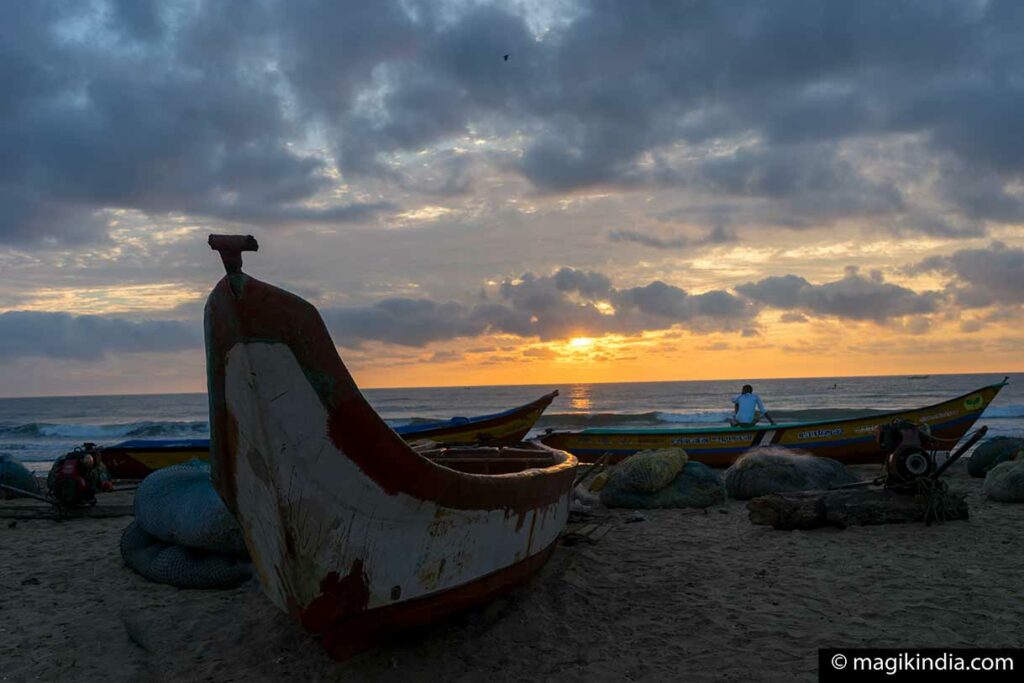
The Pallava kings ruled Tamil Nadu for 400 years, from the 6th century to the 9th. Kanchipuram was their capital and Mamallapuram their seaport. Long before the Pallavas took power, Mamallapuram (or Mahabalipuram) was known for its flourishing seaport where ships from Greece and elsewhere came to trade.
The Mahabalipuram monuments were built between the 7th and 8th centuries under the reigns of the Pallava kings Mahendravarman I (600–630), his son Narasimhavarman I (630–668), Mahendravarman II (668–672), Paramesvaravarman I (670–695) and Narasimhavarman II (695–722).
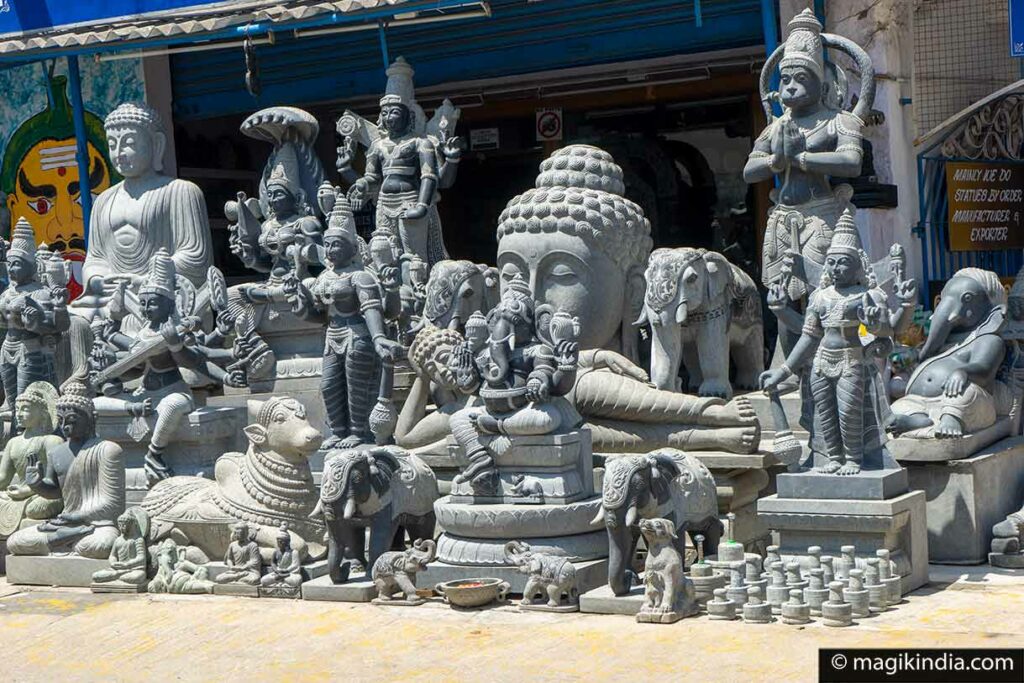
Most of the monuments were built under Narasimhavarman I, the “great warrior” or “Mamallan”, after whom the place is named. They are said to have been built as a kind of memorial to the Pallava victory over king Chalukya Pulakesin II. The fortune Mamallan acquired through conquest was invested in embellishing the town with splendid buildings.
There are four different types of monument in the Mahabalipuram complex: rathas, which are temples shaped like chariots and carved from a standing block; mandapas, which are temples carved into a rock face; temples built from stone blocks; and relief carvings on rocks.
Dance Festival
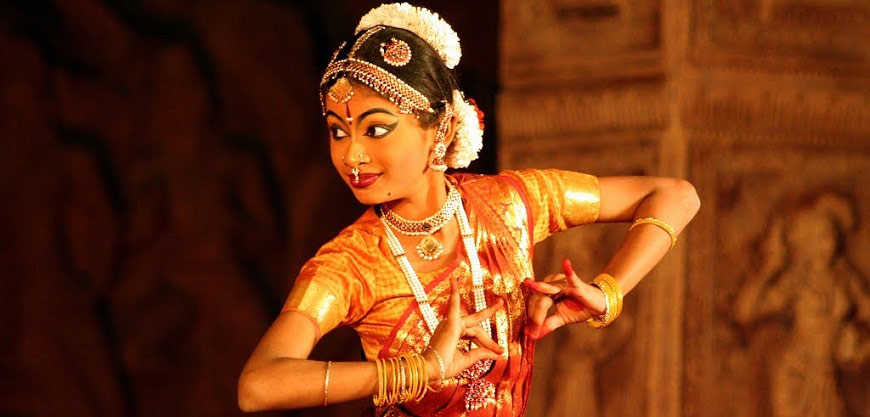
The Mamallapuram Dance Festival is held every year during Dec-Jan in Mamallapuram. This festival of indian classical dances is organised by Department of Tourism, Govt. of Tamil Nadu. Exponents of Bharata natyam, Kuchipudi, Kathak, Odissi, Mohini Attam and Kathakali perform against this magnificent backdrop of the Arjuna penance’s rock sculptures (see below).
And now, let’s visit Mahabalipuram!
Arjuna’s Penance
A tour of the Mamallapuram monuments often starts with a magnificent work of art, a rock carving alternatively known as Arjuna’s Penance and The Descent of the Ganges.
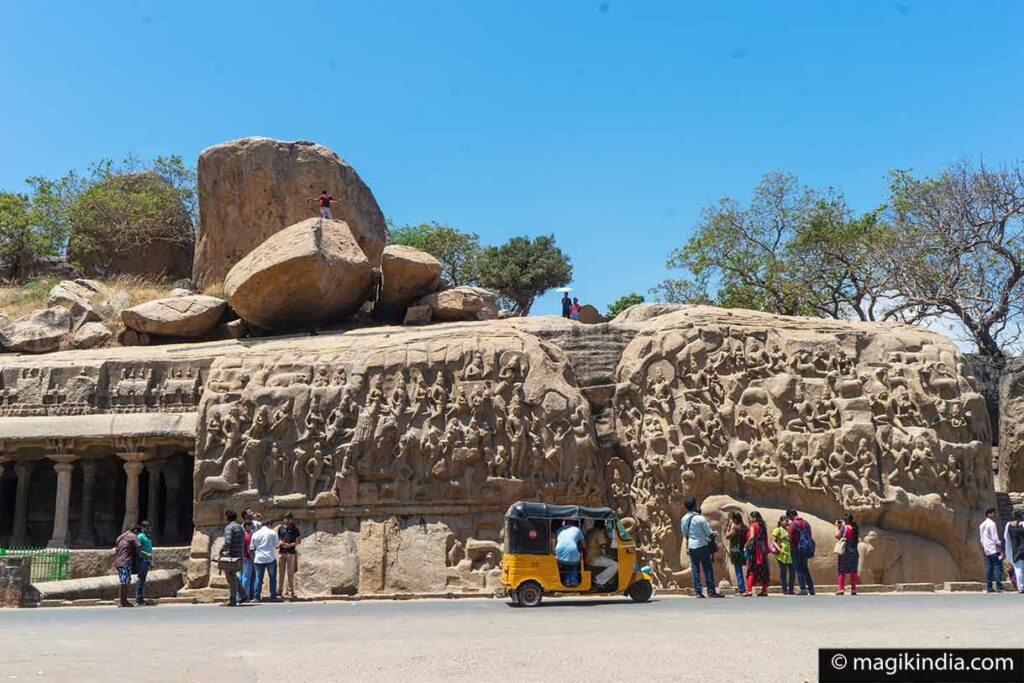
It is a huge relief sculpture carved on two adjacent rocks. At 25m long and 12m high it is perhaps one of the largest relief carvings in the world.
It measures 29m by 13m and is carved on the surface of two huge rocks.
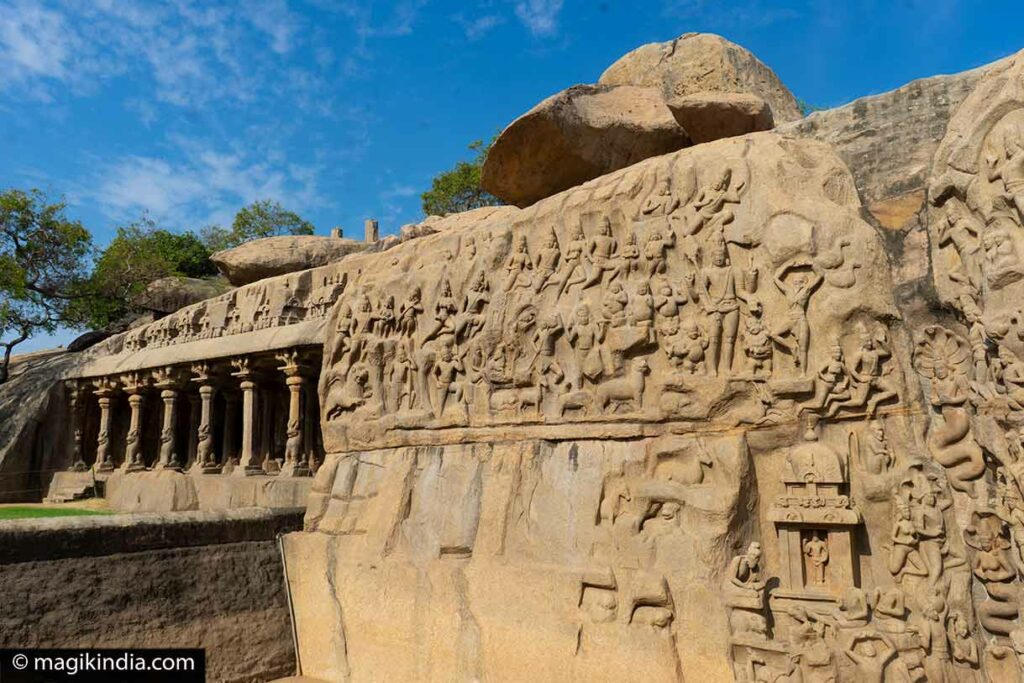
There are different interpretations of its meaning:
One interpretation is that one of the figures, shown standing on one leg, is Arjuna performing a tapa (austerity) so as to gain Shiva’s help in the Mahabharata war. In the story, Arjuna receives the Pasupata, Shiva’s most powerful weapon.
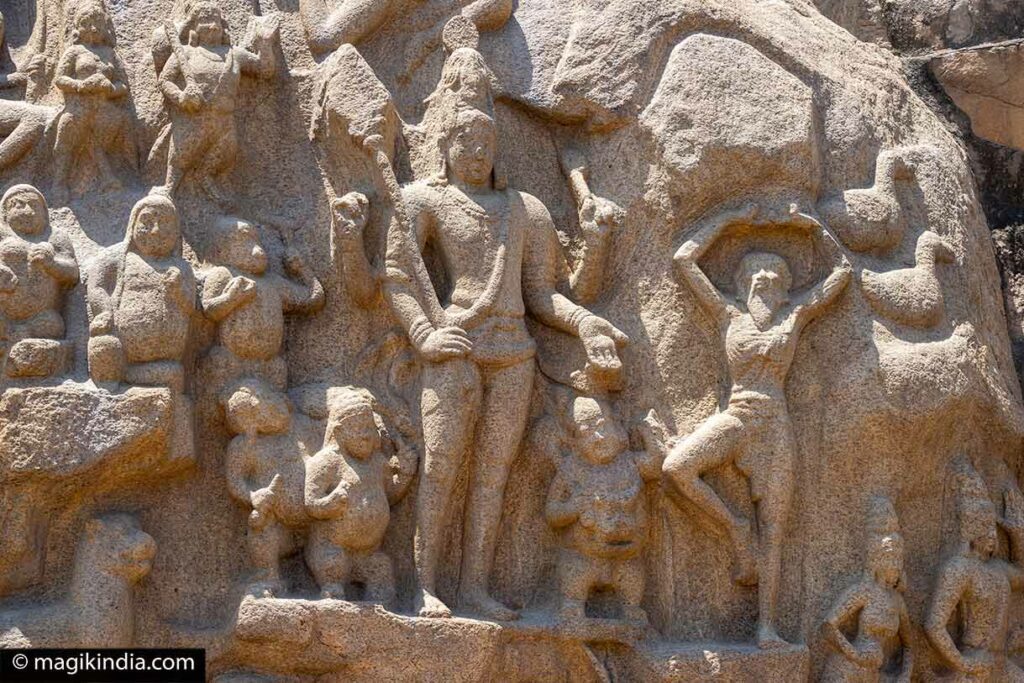
The other interpretation is that the figures in the depression between the two rocks are Ganga and Shiva. The figure on one leg is the sage Bhagiratha practicing austerities so as to bring Ganga (the Ganges) to Earth to wash the ashes of his ascendants and cleanse them of their sins. Shiva had to break Ganga’s fall, letting the water flow though his hair: otherwise its force would have been too great for the earth to withstand.
Some theoreticians also think the carving tells two narratives simultaneously: the stories of Arjuna and of Bhagiratha.
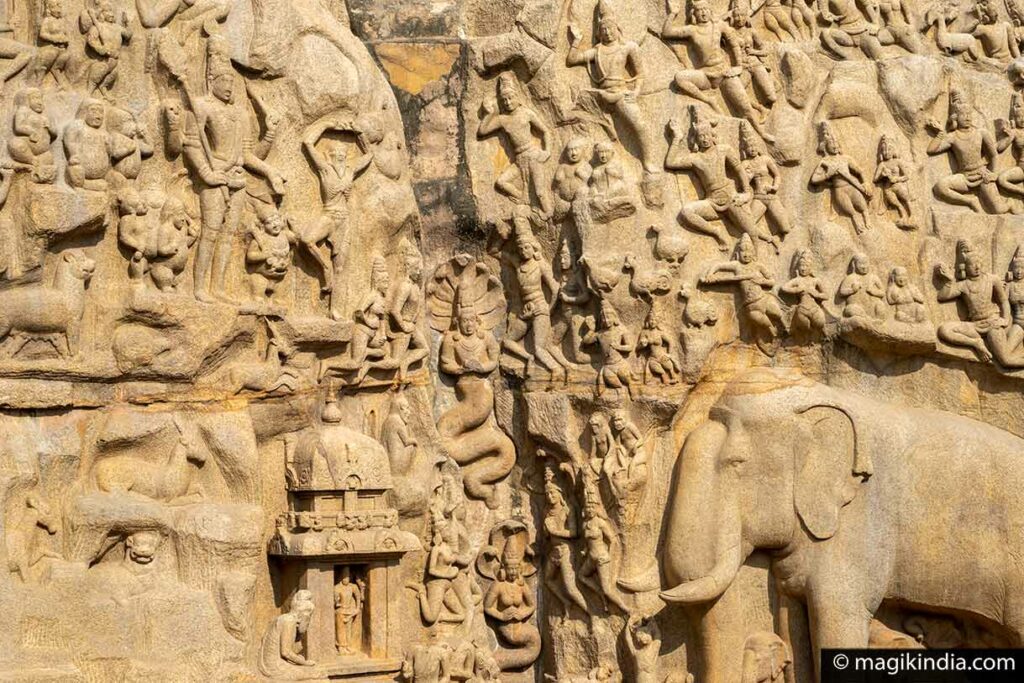
Govardhana Dhari | Krishna Mandapa
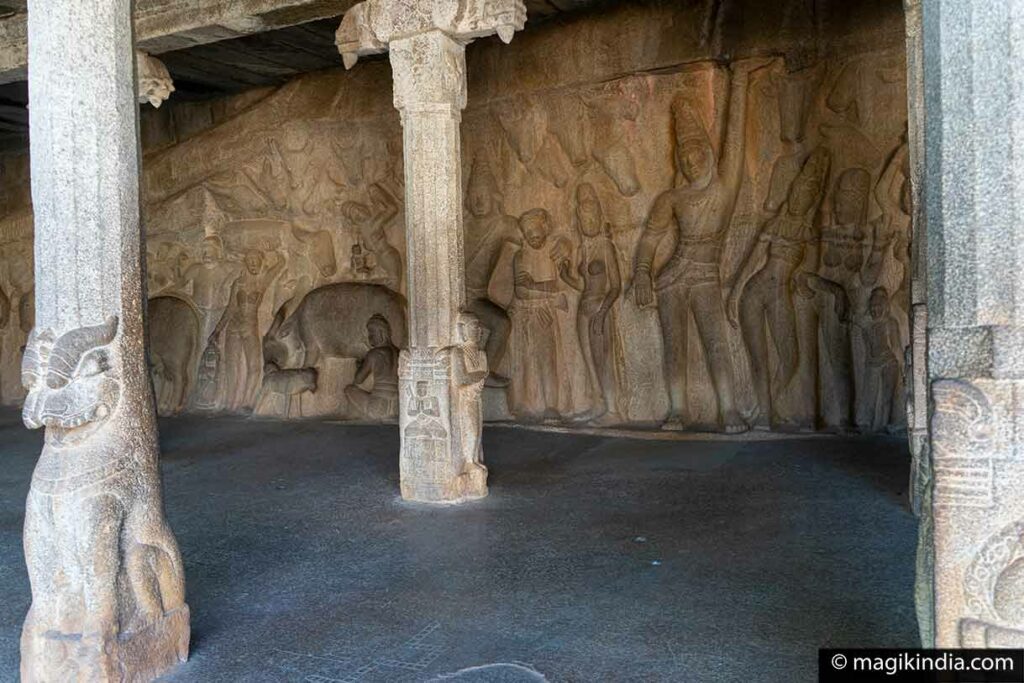
To the left of the Pancha Pandava Mandapa stands the Govardhana Mandapa rock temple
On either side are superb bas-reliefs. One of the friezes tells the story of Krishna lifting Mount Govardhan.

Ganesha Ratha

This finely-carved temple a few yards to the right of the Arjuna bas-relief is in the shape of a chariot or ratha.
It was originally dedicated to Shiva, but the lingam has been replaced by a statue of the elephant-headed god Ganesha, decked with gems and coated in sandalwood paste. It is the only temple on the entire hill that is still in operation.
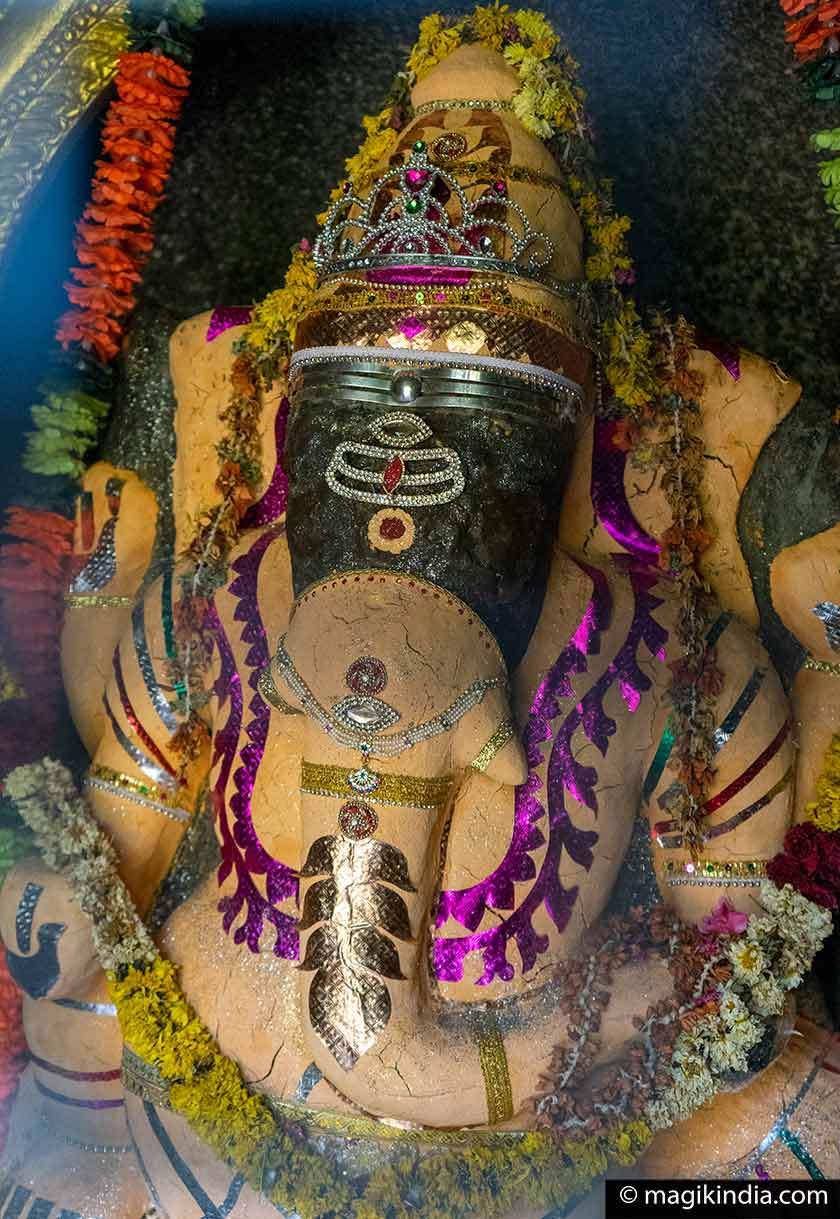
Krishna’s Butterball
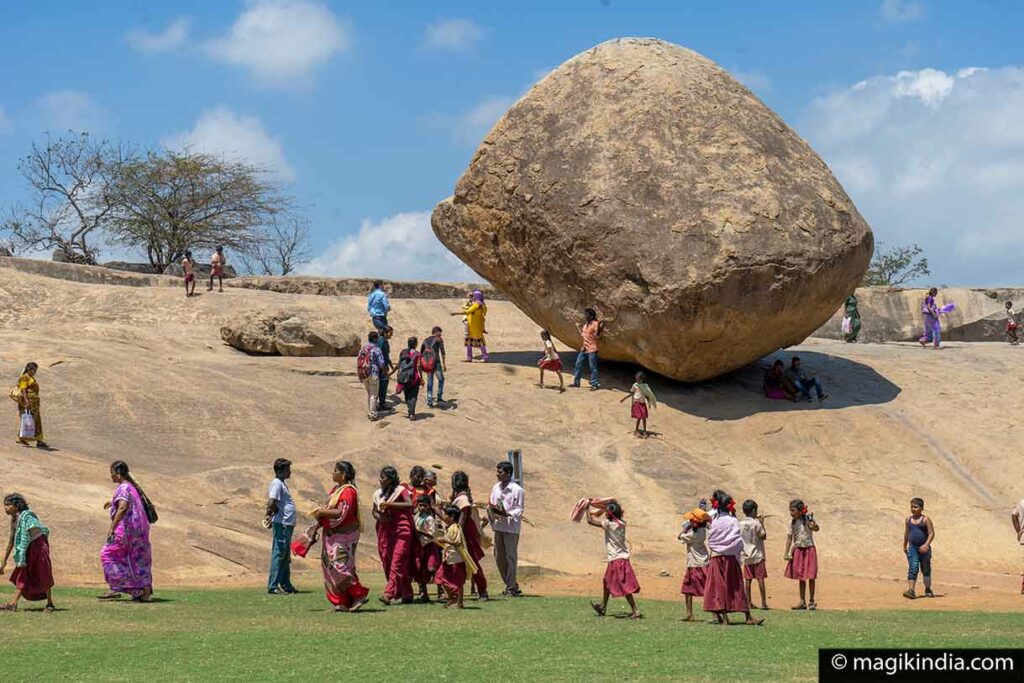
“Krishna’s butter ball” is a huge irregular boulder (diameter 5m) balanced on a 45° slope and seeming to defy the laws of physics.
According to legend, as a child Lord Krishna had an insatiable appetite for butter and was forever taking handfuls from his mother’s butter jar. He dropped a ball of it here!
Trimurti cave Temple
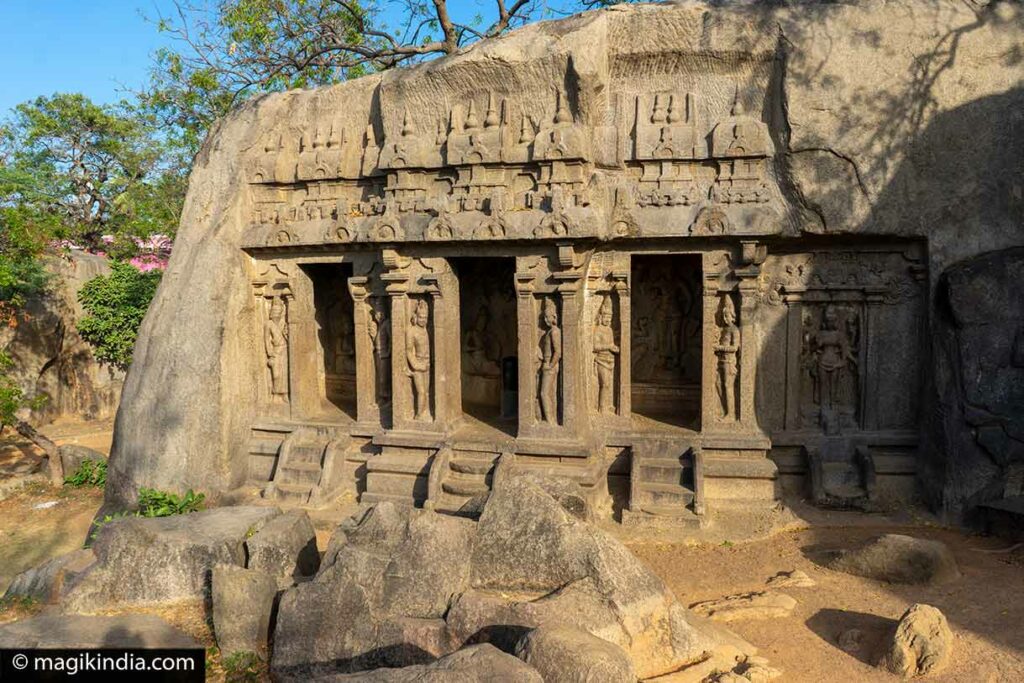
North of Krishna’s butter ball stands the Trimurti cave temple.
It consists of three distinct chambers, each dedicated to one member of the trimurti or Hindu trinity: Brahma the creator, Vishnu the preserver and Shiva the destroyer.
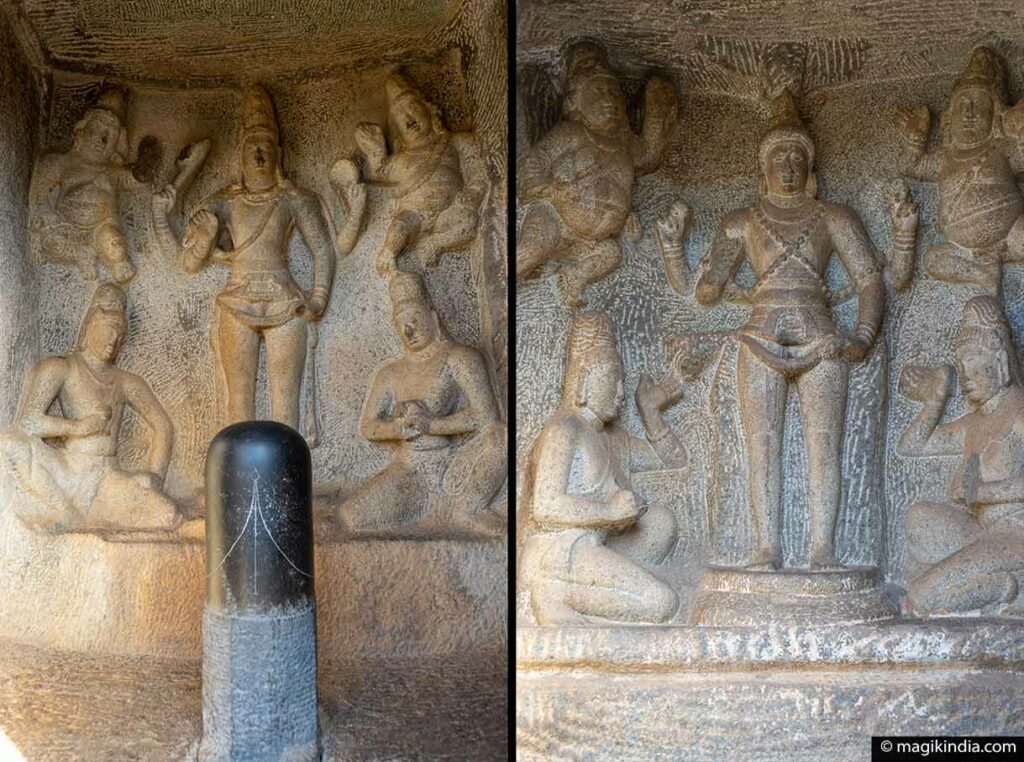
Two panels of the temple of Trimurti, Shiva and Vishnu
The entrance to each chamber is flanked by dvarapalas, temple guardians, on narrow panels. At the right-hand end of the temple is Shiva’s consort in the form of eight-armed Durga overcoming the buffalo-demon Manisha.
Temples to Brahma are rare in India. The best known is in Pushkar in Rajasthan.
Animal carvings
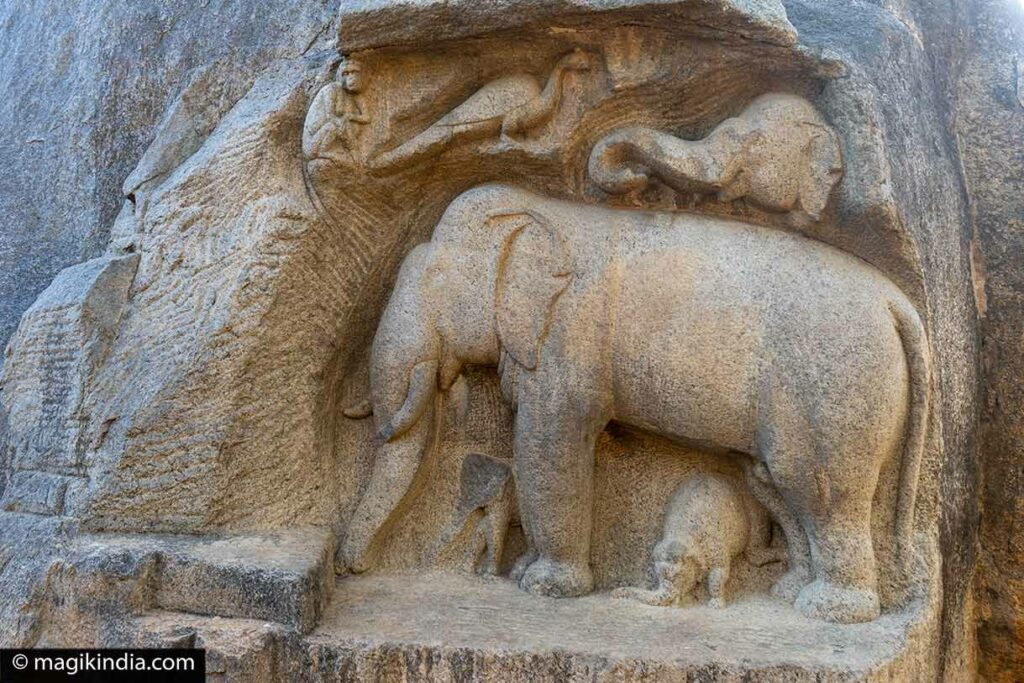
Just behind the Trimurti temple is a panel with carvings of elephants, a partridge and a monkey.
Some guides will tell you that this panel was used for training apprentice stone-carvers but some theorists think the sculptures describe Buddhist myths from the Jataka, a collection of tales about the Buddha’s previous lives.
Varaha Mandapa

Returning the way we came, behind the bas-relief of Arjuna’s penance, we find the Varaha cave temple dedicated to Vishnu.
It is supported by four pillars carved with graceful lions. Inside, the walls of the mandapa feature four striking bas-reliefs:
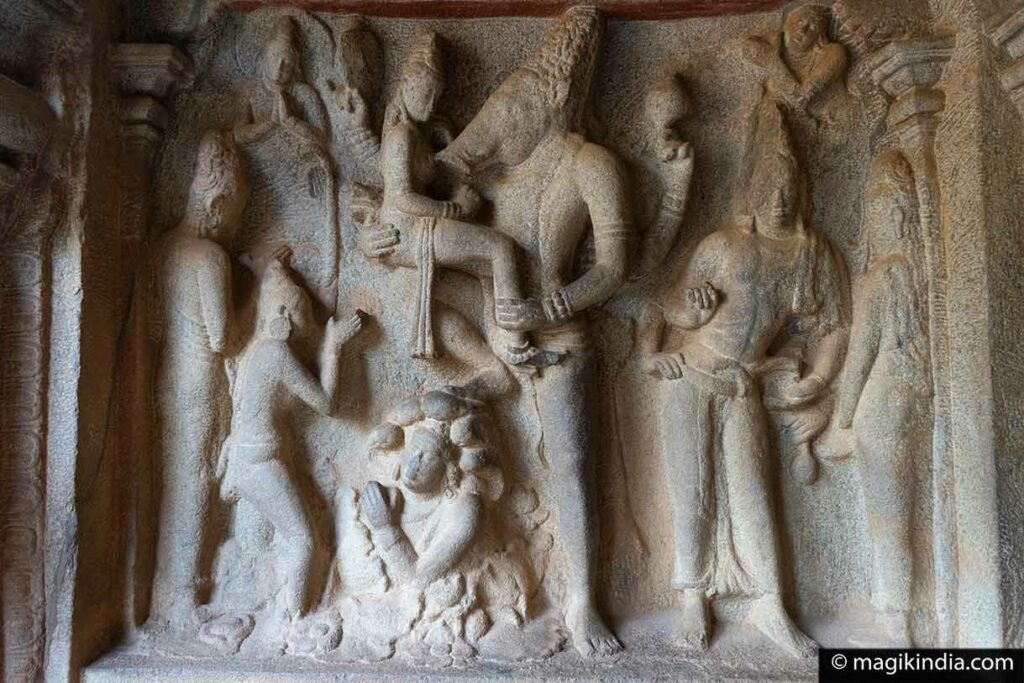
The north panel represents the wild boar Varaha, Vishnu’s third incarnation. He has one foot on the serpent king Naga and on his right thigh he holds up Bhudevi the Earth Goddess, saving her from the primordial ocean. Symbolically, this signifies the elimination of human ignorance.
The south panel shows Vishnu as the eight-armed giant Trivikrama holding a weapon in each hand. This panel tells the story of King Mahabali.
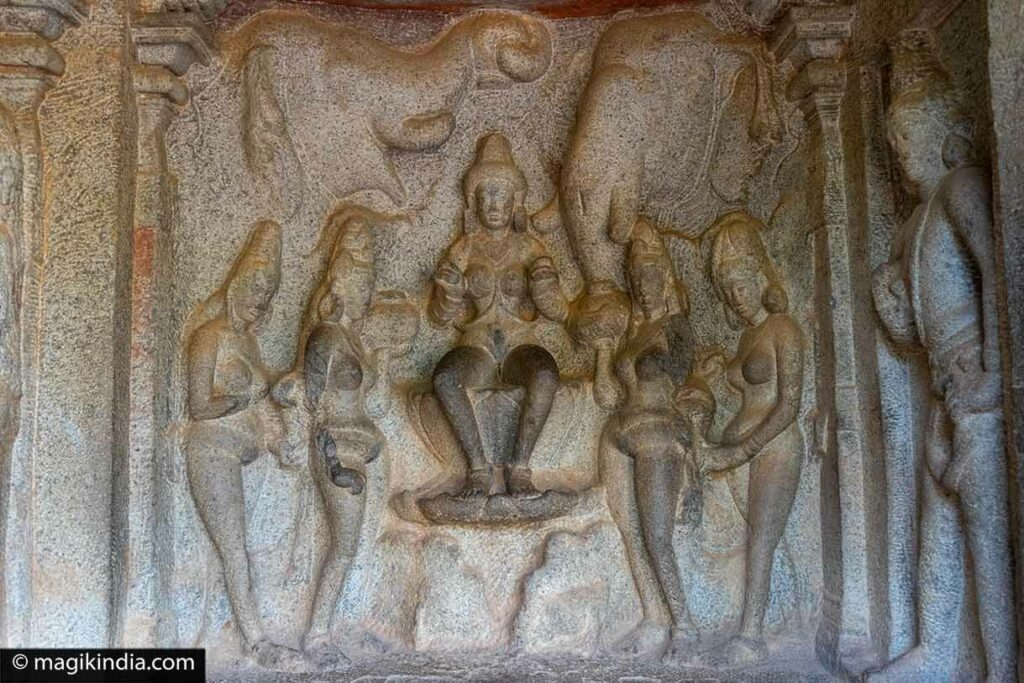
The east panel shows Gajalakshmi, goddess of prosperity, bathing on a lotus with two maids and two elephants to shower her with water.
The last panel, opposite the entrance, shows the goddess Durga standing on a lotus. She has four arms and stands under a royal parasol.
Raya Gopuram
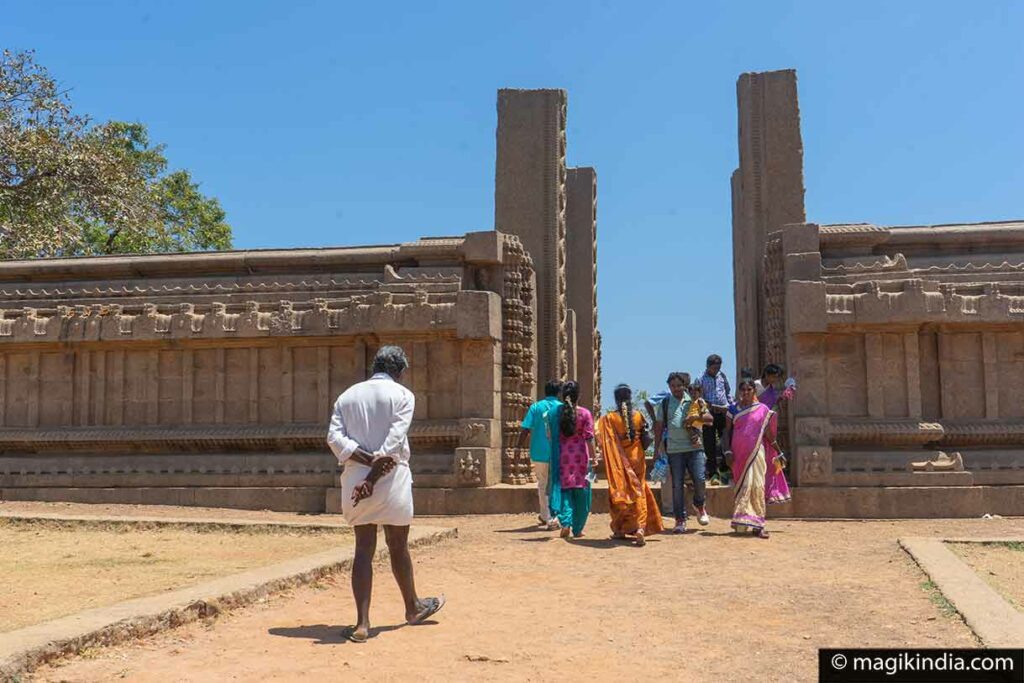
Continuing straight on past the Varaha Mandapa we come to a quite different kind of temple, with four pillars that seem to be holding up a kind of invisible gopuram (temple tower).
In fact this structure, the Raya Gopuram, is considered unfinished. It is though that work on it stopped abruptly owing to wars between different dynasties.
The remaining pillars are delicately carved with the ten incarnations of Vishnu.
The Lion Throne
The Lion Throne to the west, on the hill, is a raised platform with a seated lion which was discovered near a pile of bricks.

Mahabalipuram was the seaport of the Pallava kings. The lion is thought to have been the Pallavas’ throne of a former palace.
Ramanuja Mandapa
On the way to lighthouse, below, is the Ramanuja Mandapa.

It has six pillars in front and four more behind, decorated with the horned lions typical of the Mahabalipuram mandapas. Near the mandapa there are steps cut into the rock, leading to the top of the hillock where a ruined temple stands.
The mandapa was originally dedicated to Shiva and was one of the most exquisite temples in Mahabalipuram.
Later, in the reigns of the Vijayanagara kings, devotees of Vishnu (called Vaishnavas) destroyed the Shaivite symbols and rededicated the temple to Vishnu.
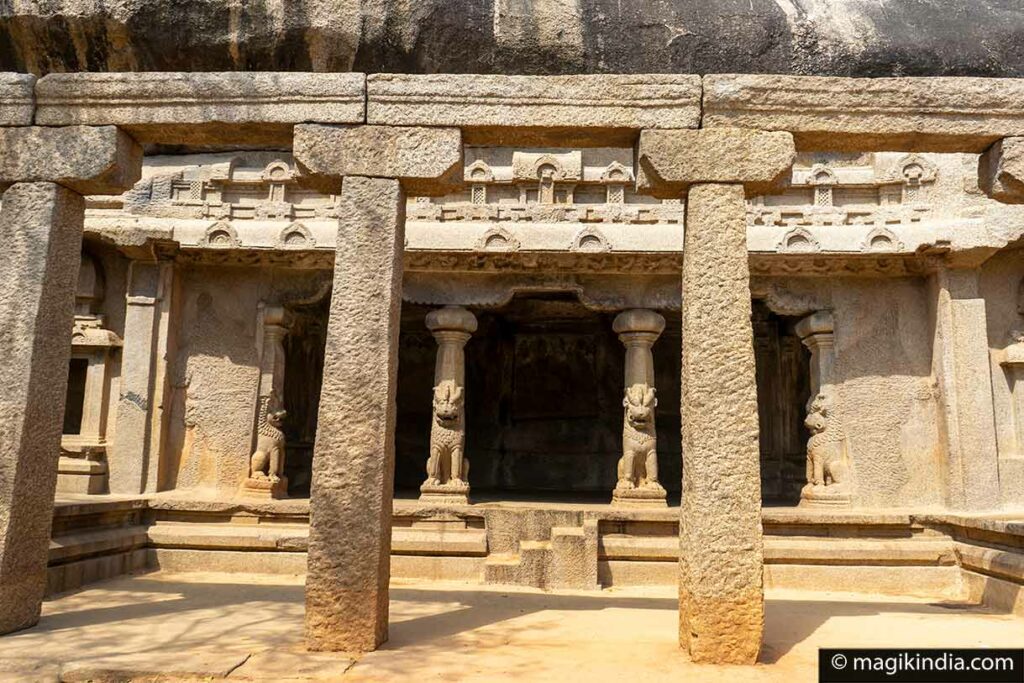
An inscription on the floor between two pillars says “May those whose hearts do not dwell on Rudra (Shiva), liberator from the path of suffering, be six times cursed.” It is not known whether the curse did fall on the Vishnu devotees, but although the original carvings were largely destroyed they were never replaced by new ones.
Mahishasuramardini Mandapa and Olakkannesvara Temple
The Mahishasuramardini cave temple near the new Mamallapuram lighthouse dates from the late 7th century.
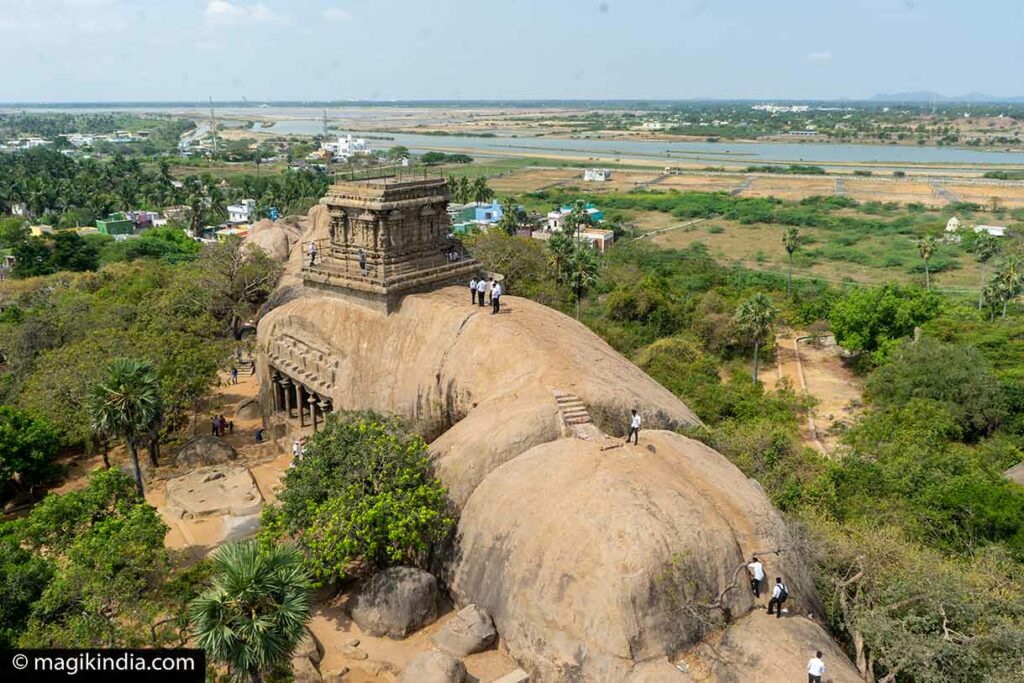
It is dedicated to the Hindu goddess Mahishasuramardini, a form of Durga, and contains some magnificent bas-reliefs. One shows Vishnu reclining on the serpent king Adisesha.
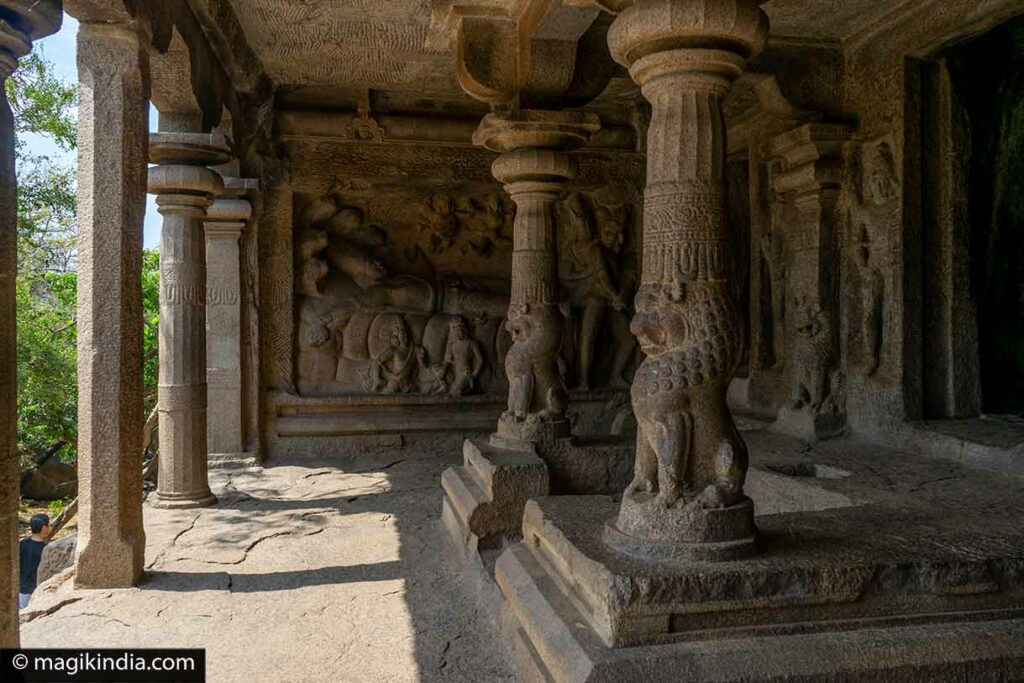
Another shows Durga overcoming the buffalo-headed demon Mahishasura. The shrine in the middle contains a Somaskanda panel depicting the god Skanda (also called Karttikeya, Kumara or Subrahmanya) as a child seated between his parents Shiva and Parvati.
Perched above the Mahishasuramardini mandapa is the Olakkannesvara Temple, or ancient lighthouse.
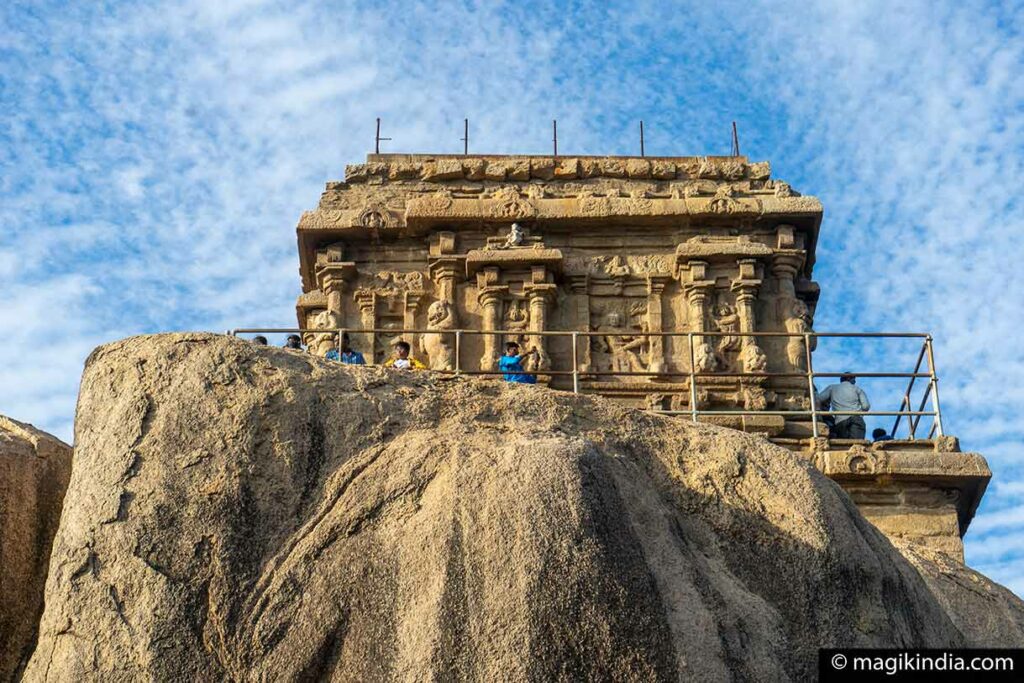
The name means “temple to Shiva whose forehead contains the eye of wisdom”.
The Olakkannesvara temple was built in the reign of the king Rajasimha. Archaeologist A.H. Longhurst noted that long before the modern lighthouse was built on the site in 1900, the roof of the Olakkannesvara was used as a lighthouse, perhaps with a wooden structure on the roof. The temple was used for worship until the 19th century.
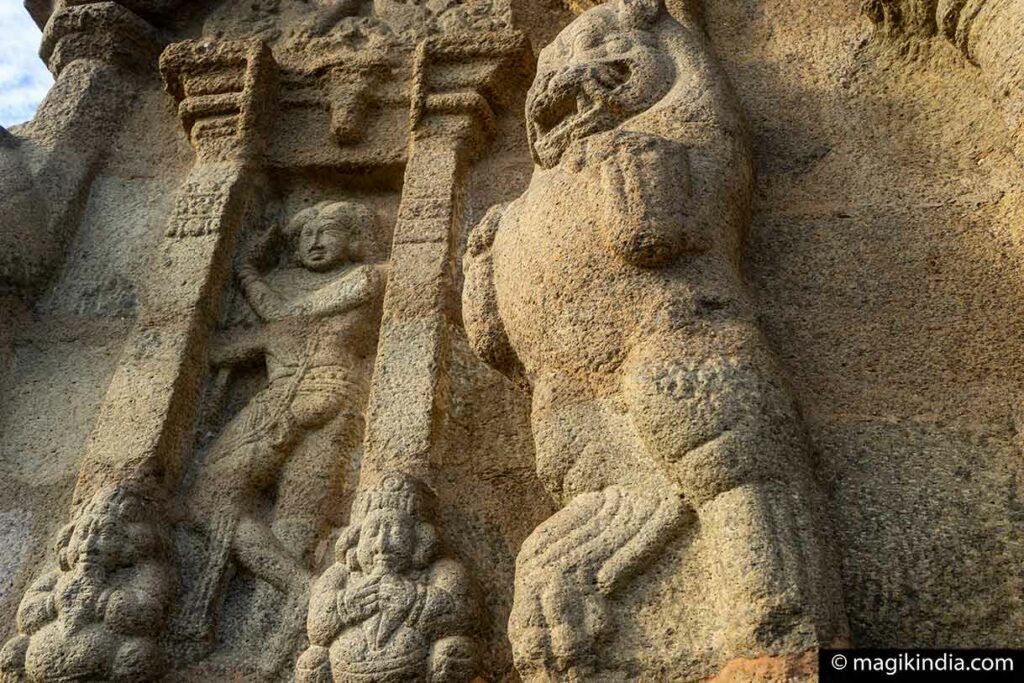
The shikara or temple tower no longer exists but is thought to have been built in the same Dravidian style as the tower of the Shore Temple.
On the outside walls there are devkoshtas (niches) with carvings of Shiva and Parvati.
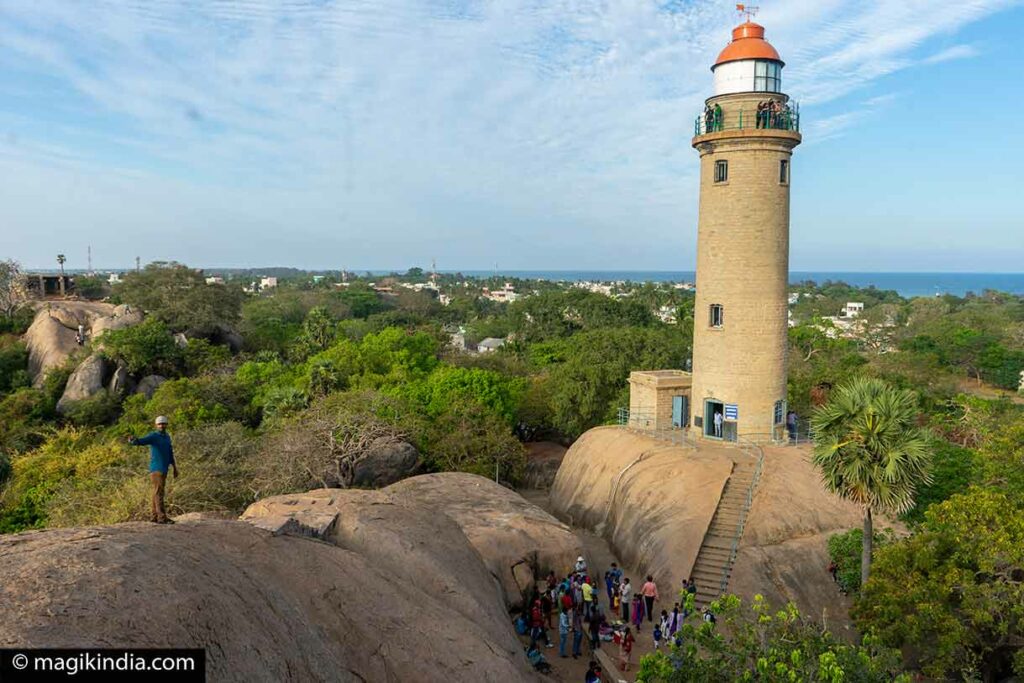
The new lighthouse opposite the Mahishasuramardini temple can be visited, and offers an interesting view of the village and the archaeological site. Tickets cost 50 rupees.
Pancha Pandava Rathas
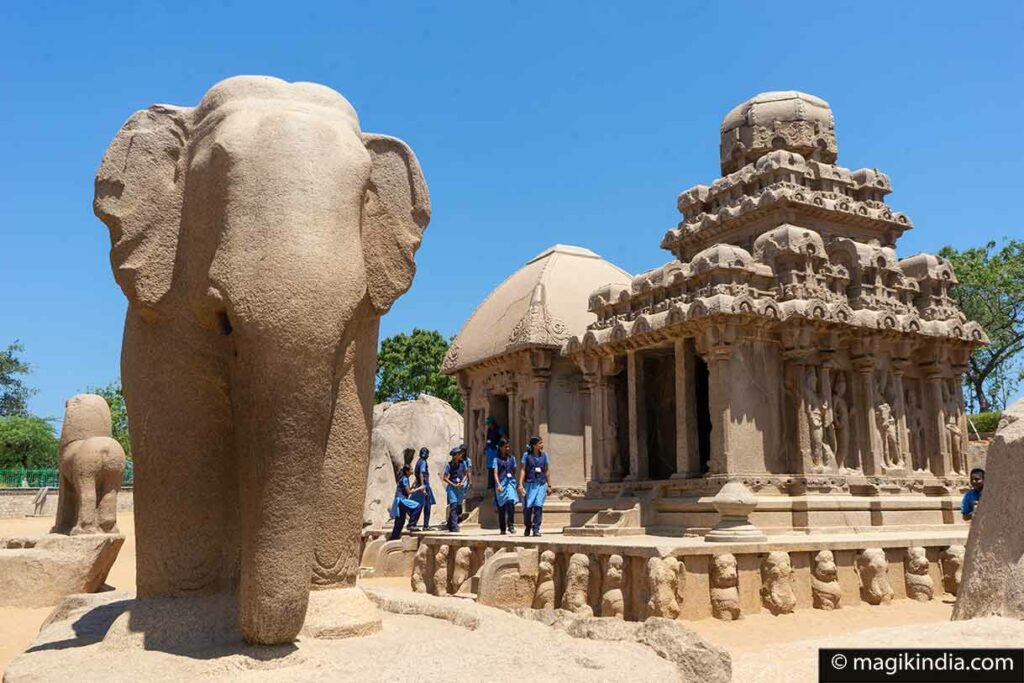
The Pancha Rathas (meaning “five chariots”) are architectural gems dating from the 7th century and attributed to the reigns of King Mahendravarman I and his son Narasimhavarman.
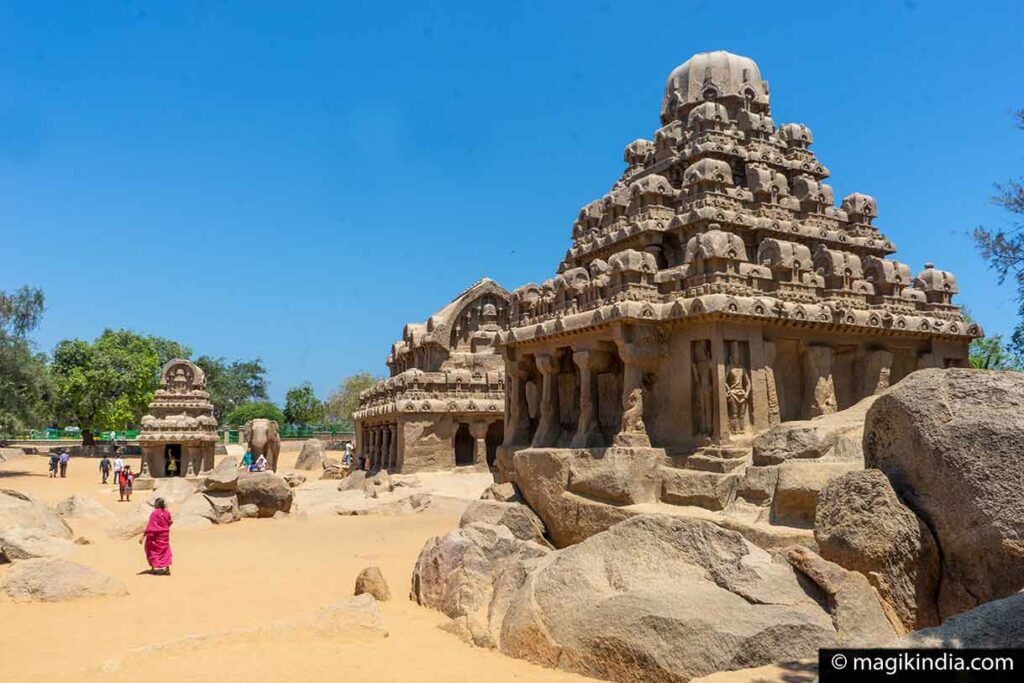
These monuments, carved out of the rock, represent wheel-less chariots. They are named Yudhisthira, Bhima, Arjuna, Nakula and Sahadeva, after the Pancha Pandava, the five sons of Pandu in the Mahabharata epic. They appear never to have been finished.
Shore Temple
The Shore Temple, looking out across the Bay of Bengal, dates from about 700 CE.
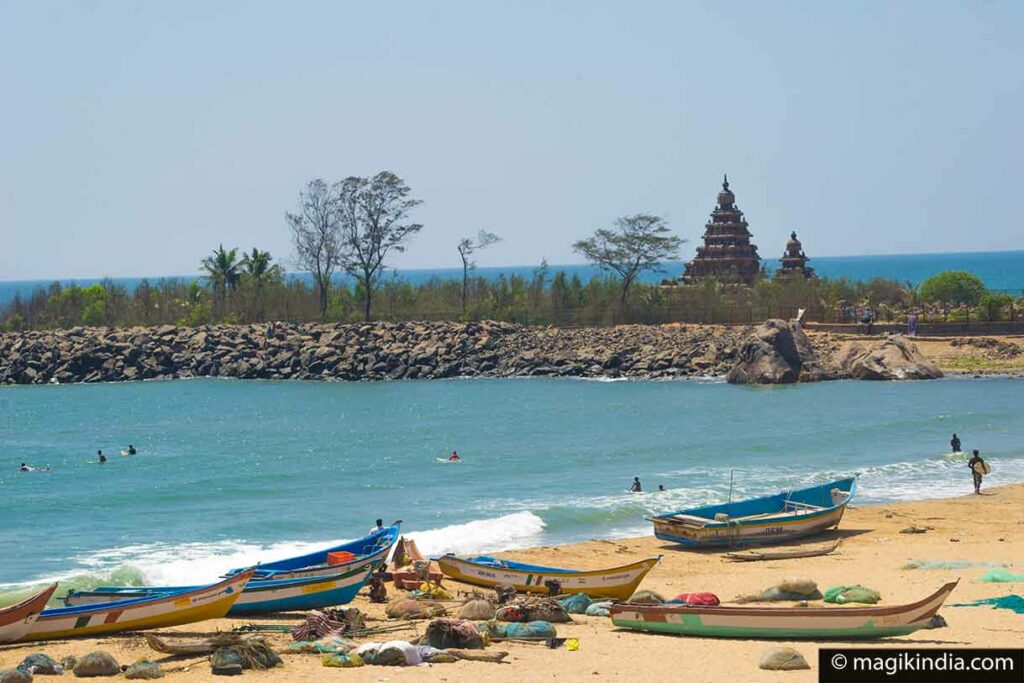
It is one of the oldest stone-built temples in South India and was one of the first temples to be created at Mahabalipuram.
Unlike the other temples in Mahabalipuram it is not carved directly from the rock but was built of dressed stone blocks, though the stone is local granite.

The main shrine is dedicated to Shiva and houses a lingam. The second is also dedicated to Shiva but in his Ksatriyasimnesvara form. The third is dedicated to Vishnu; he is shown reclining on the divine snake Sesha.
Although worn by time and sea winds, the temple is still a magnificent sight.
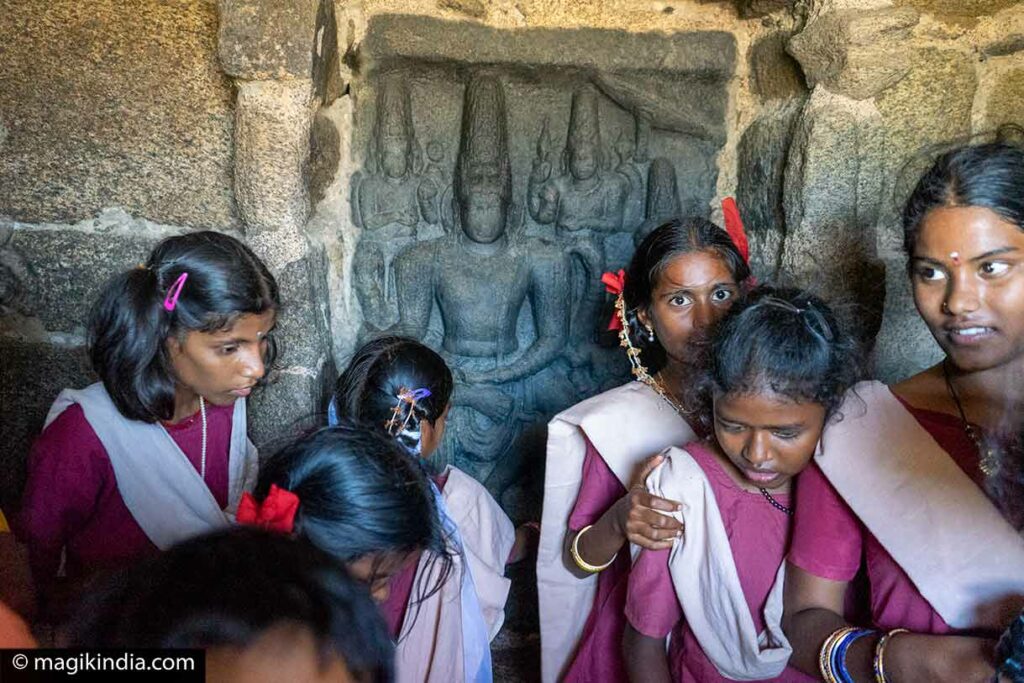
Thirukadalmallai Temple
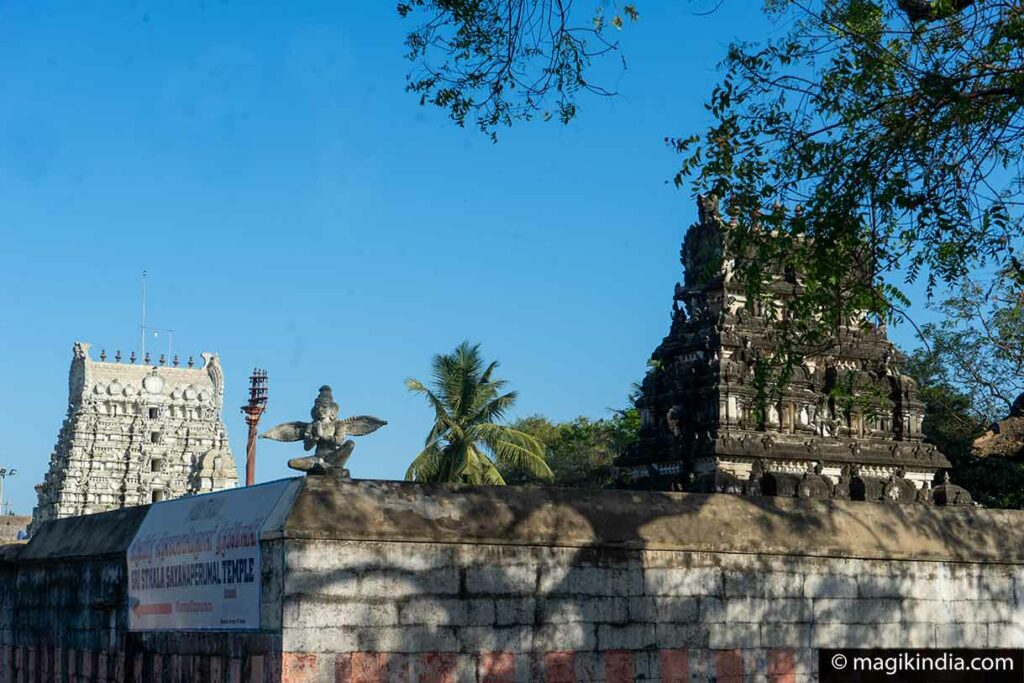
Near the bus station stands the Thirukadalmallai temple, dedicated to the Hindu god Vishnu.
This too was built by the Pallava kings. It has another name, Sthalasayana Perumal, and is one of the 108 holy places of Vishnu, the Divya Desams.
Tiger and Athiranachanda Caves (6km)
The tiger and Athiranachanda Cave are 8th-century rock-cut Hindu temples in the hamlet of Saluvankuppam.
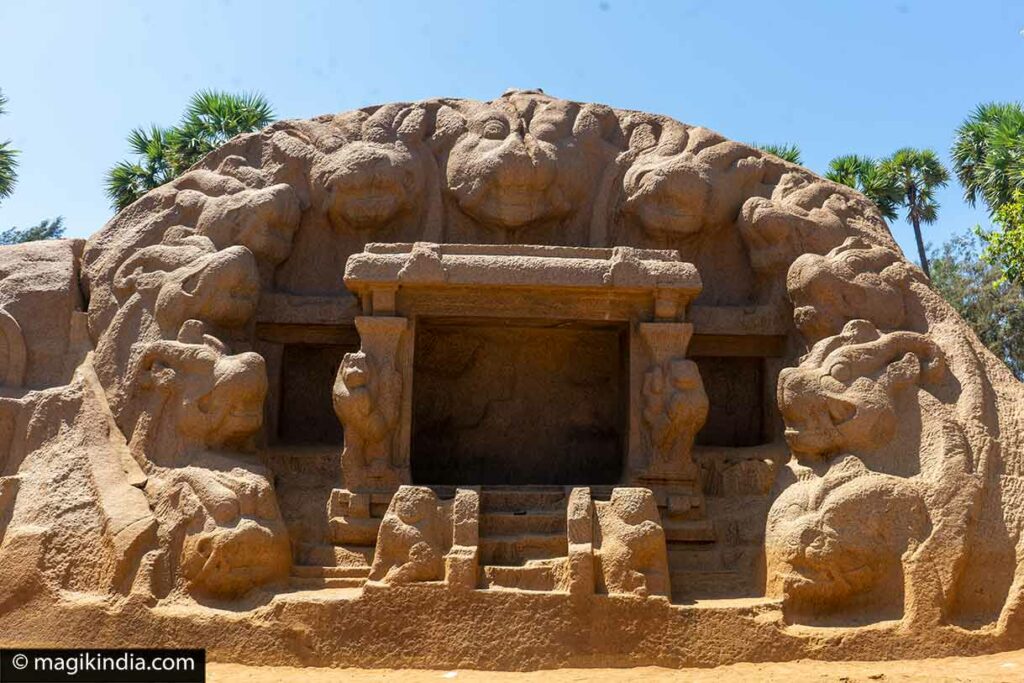
The Tiger Cave is so named because it is decorated with dozens of carved tiger heads. It is a temple to Durga, dating from the time of the Pallava king Rajasimla. It looks like a theatre set and in fact some historians think the royal court held festivities here.
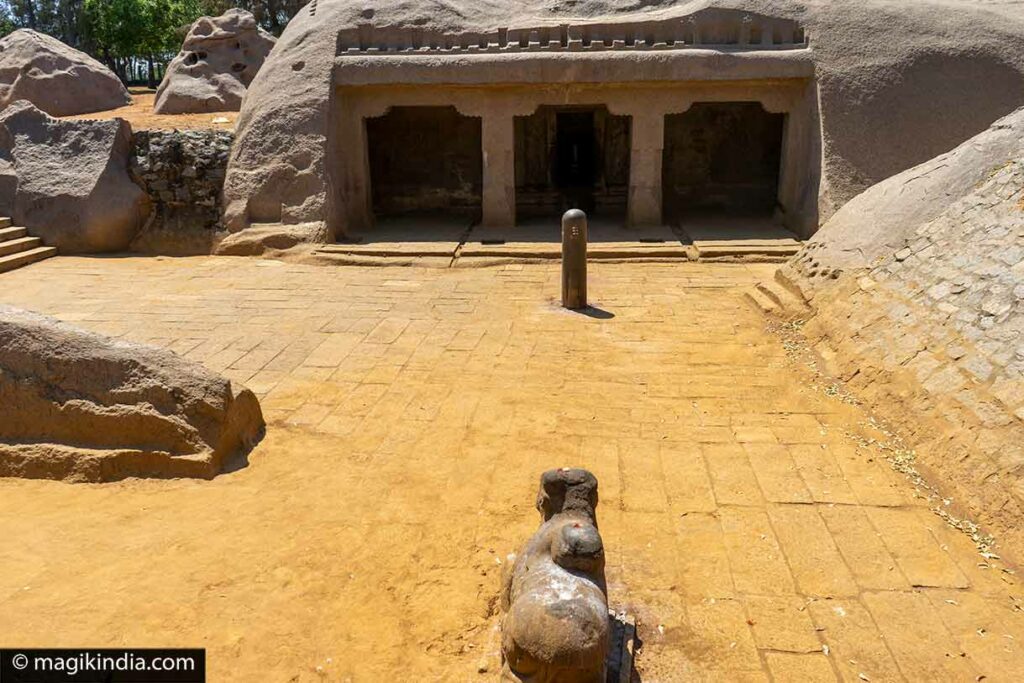
Tucked between two rocks a few yards from the Tiger Cave is the Athiranachanda Cave.
It is very plain compared to the Tiger Cave. It is dedicated to Shiva in his Athiranachandeshwara form. Athiranachanda was also one of the epithets applied to the king Rajasimla.
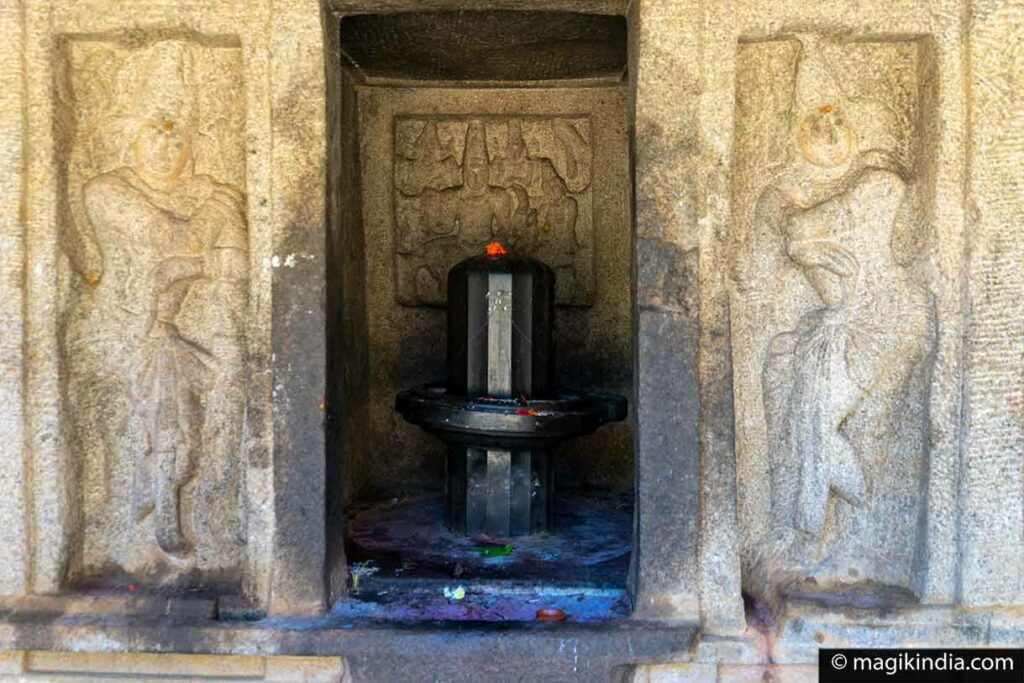

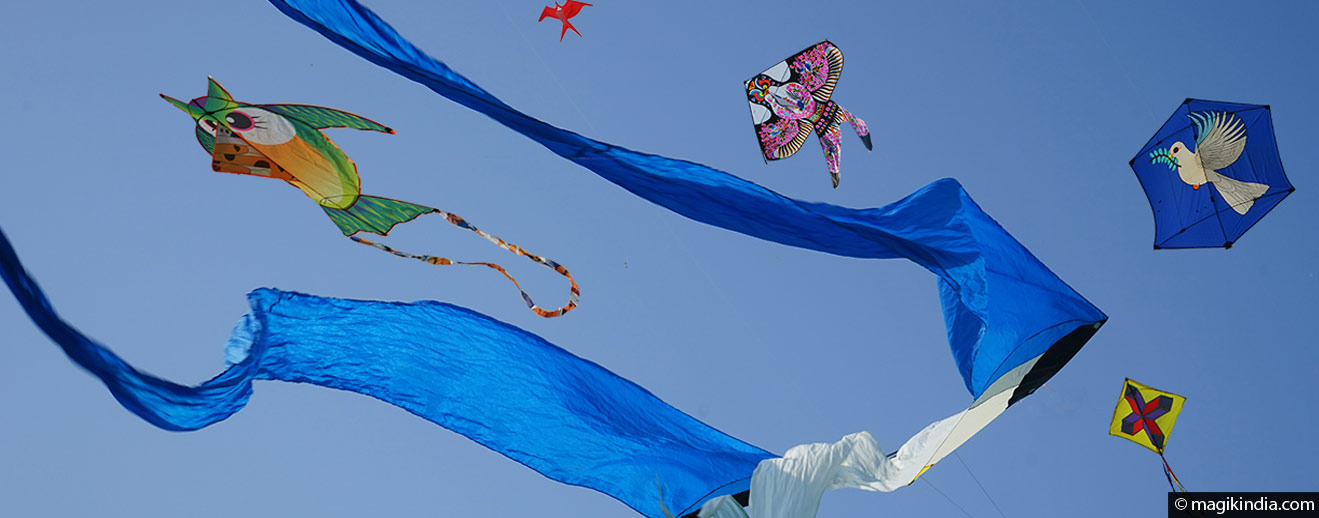

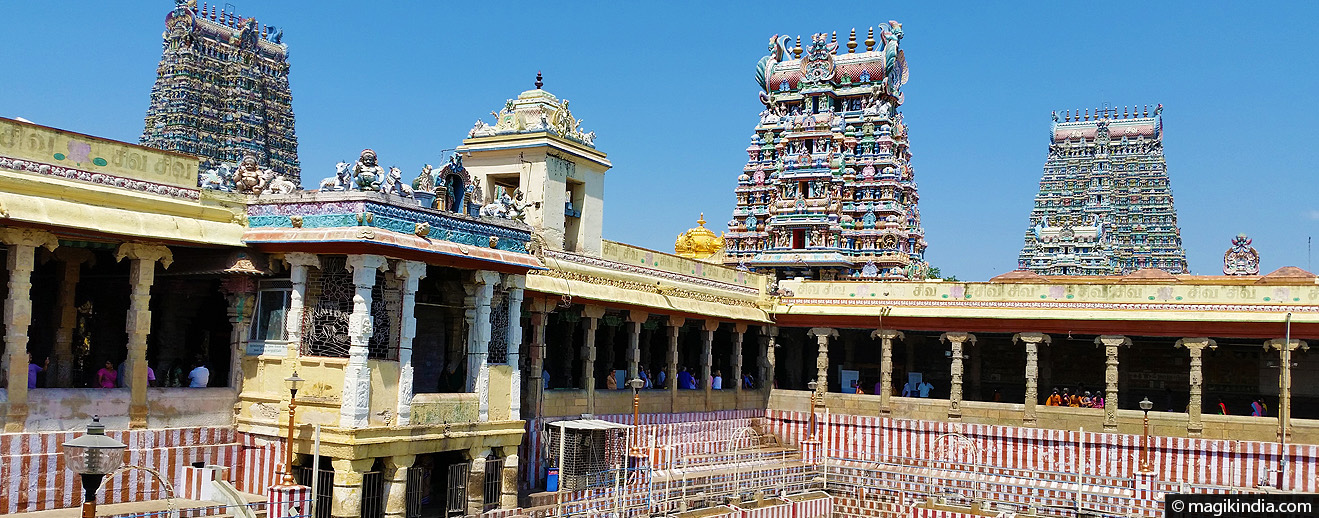
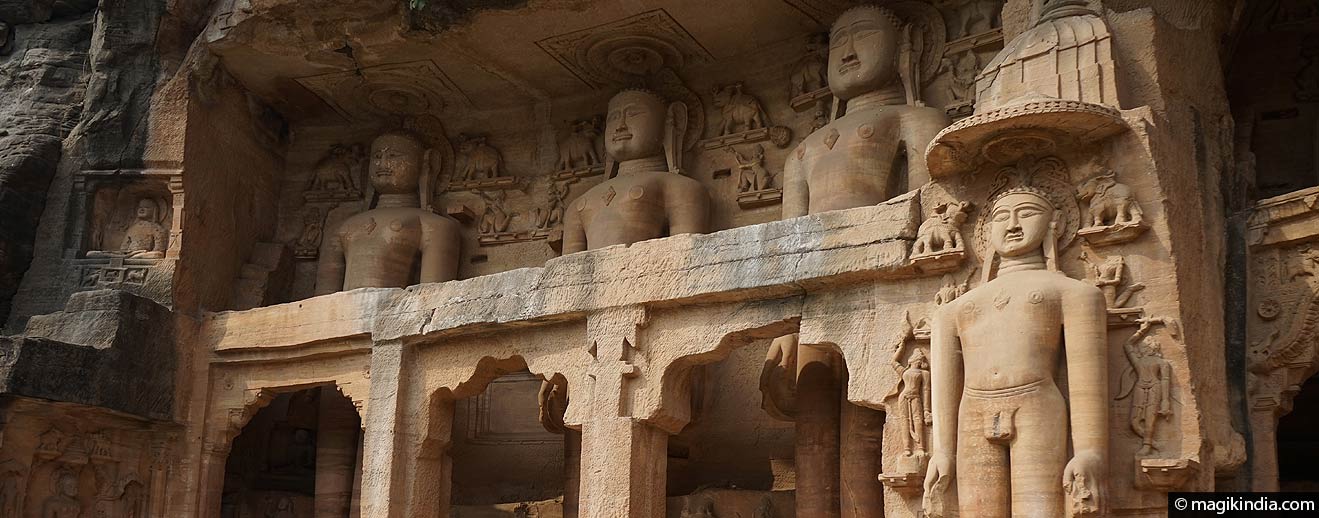
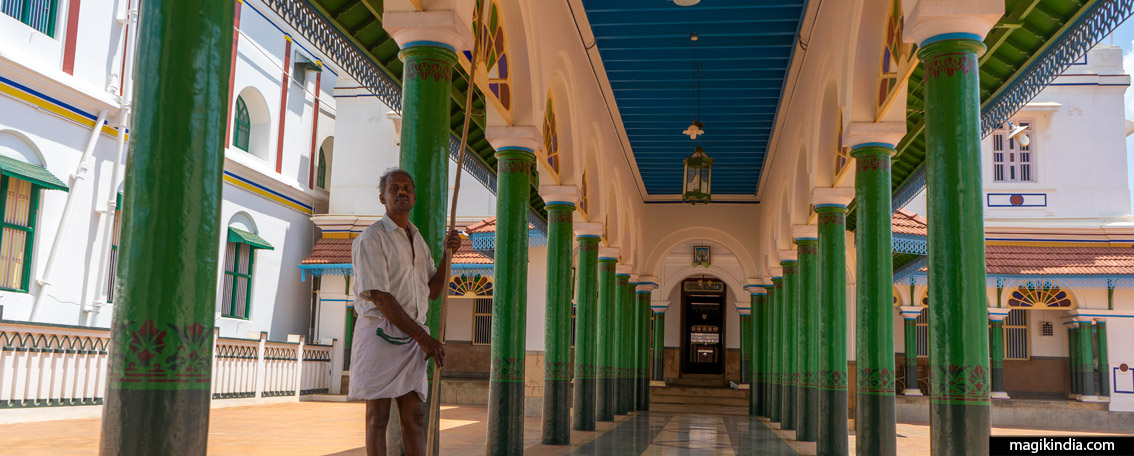
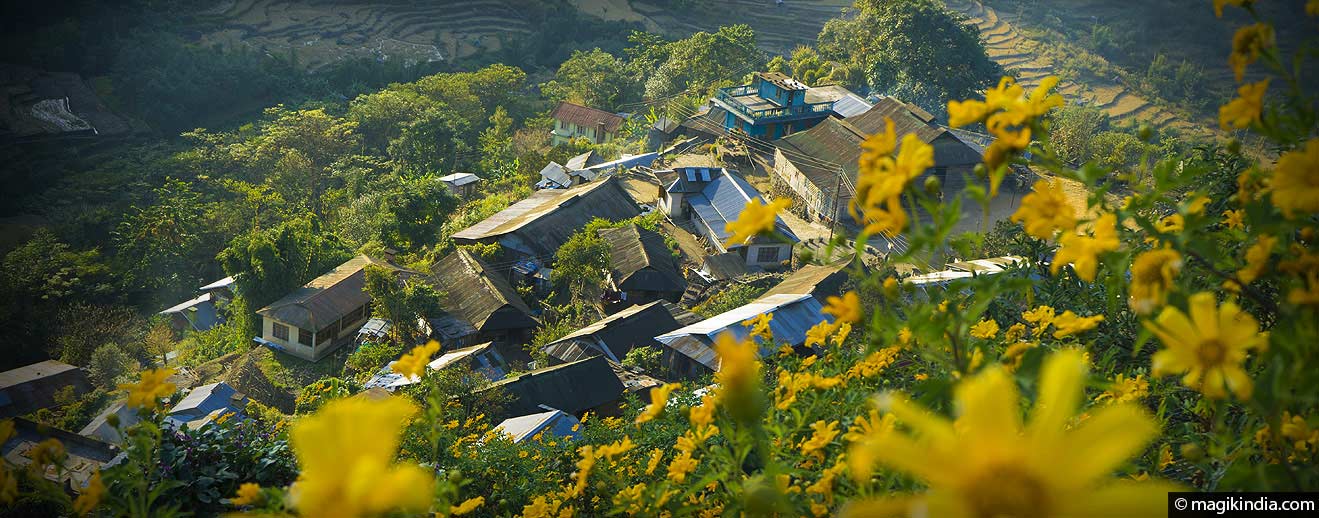
Your efforts to collect these information and photographes and videos…..and put it in your blog….is excellent….Thank you for this. vraj mistry, Ahmedabad.
Thank you dear sir. I wish you a good Makar Sankranti in advance. I have very good memories of this event when I visited Ahmedabad. warm regards, Mathini